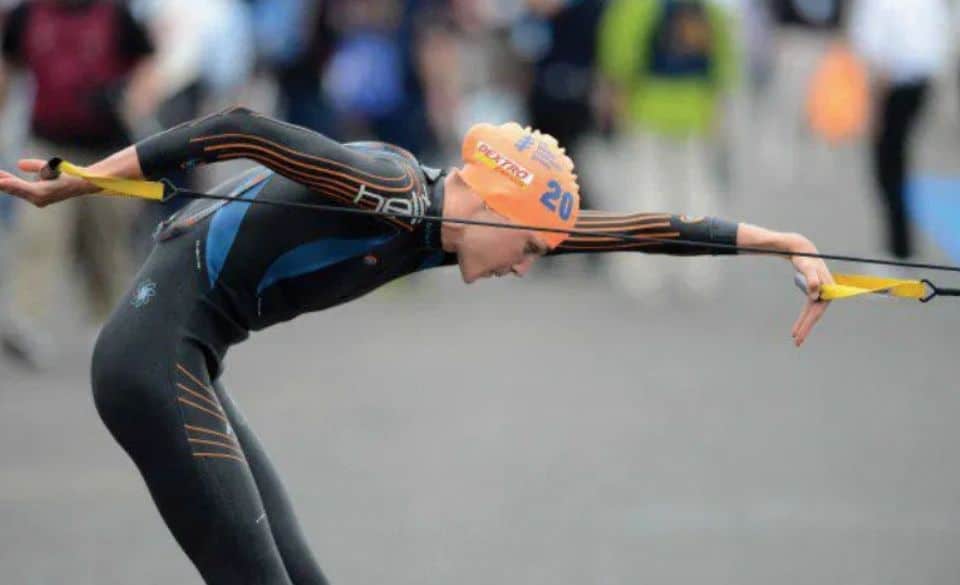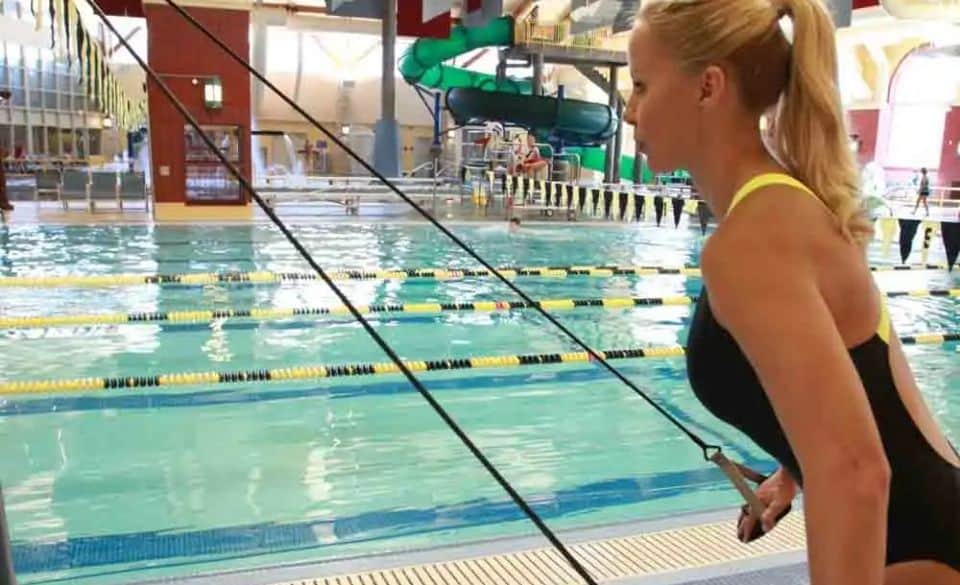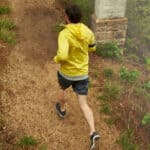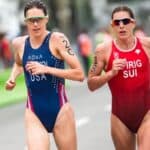
How to Train For a Triathlon Without a Pool – Resistance Band Workouts For Triathletes
t’s not uncommon for some of the athletes we coach in triathlon to have periods where they can’t swim. Usually, this is because the pool is being renovated, or they are traveling with work. Luckily there are some dry land swimming exercises you can do to keep your form in top shape.
Learning how to train for a triathlon without a pool is something all triathletes should learn. Especially now, with everything happening, many athletes are forced to forgo regular swimming.
Even though you may think doing dryland exercises doesn’t benefit your stroke, many elite swimmers incorporate these into their training routine. This is due to the benefits it can bring to swimmers, such as increased strength and power in the pool and prevent injuries.
A study by the Journal of Sports Science and Medicine studied the effects of strength and endurance training in swimmers. What they found was dryland strength training significantly improved force in the water, which transferred to faster middle distance times. Although the study didn’t find any improvements in sprint distances, it gives some benefit to the triathlete that is usually swimming more than 1000m.
When deciding on the exercises you should do when you don’t have access to a pool, first focus on the muscle groups used in freestyle.
For the triathlete, this is going to be the shoulder muscles, triceps, and lats, along with a few others.
Below are some exercises you can do when you don’t have access to a pool or wondering how to train for a triathlon without a pool :
1. Triceps and Biceps muscles
Focus on starting with 15 tricep pushdowns and 15 bicep curls. Ideally, use free weights or a cable. Alternate between one another while doing 3-4 sets.
Used during the last part of the push phase of freestyle swimming, working on the triceps can strengthen both your push and pull phase. Alternatively, the bicep curls can help strengthen the catch phase.
2. Shoulder Press
The shoulder press is a great exercise for triathletes, it not only helps hold a more stable bike position but also improves arm pull in the water. It also provides a benefit to the recovery phase of the stroke and prevents shoulder injuries.
3. Push-downs
There are a few variations to the pull-down. As a triathlete, we want to focus on the straight arm pull down. You can use either a cable machine or swim bands. This exercise helps to build strength in the water and help during the underwater phase of your stroke. Focus on starting with at least 20 repetitions.
4. Bench Press
The bench press exercise can either be performed with dumbells, a barbell, or a machine. Start with 4 sets of 10 repetitions and build from there. This will help to develop your chest muscles that are vital in stabilizing your body during swimming.
5. Russian Twist
The Russian twist is one of the best exercises for strengthening the obliques. It can help you strengthen the abdominal area that is vital to a good pull in freestyle swimming. In turn, it will help develop a more stable and powerful stroke.

How to Practice Swimming Without a Pool
While the above exercises are great when you don’t have access to a pool, you may be still wondering how to practice swimming without a pool?
Luckily, there are some exercises you can do out of the pool that can help replicate and develop your swim stroke.
Resistant bands should be part of every triathlete’s equipment. They provide a tool that can be used anywhere at any time. Often many of our triathletes use these when they don’t have access to a pool.
Resistant bands help triathletes get stronger and address muscle imbalances out of the water. They provide all levels of swimmers and triathletes the ability to build strength and power. As well as agility, while increasing their swimming performance.
If you are starting to use resistant bands for swimming, make sure you choose the correct ones. Brands like Elite provide different color combinations based on the level and exercises you are doing.
There are a few different types of bands, these include:
Bands with handles – Used for different full-body exercises and usually anchored by a door or something stable.
Mini Bands – Designed more for the swimmer, these are perfect for upper body movements.
Even if you have access to a pool during these unfortunate times, practicing swimming with resistance bands can help fine-tune your swimming stroke in the comfort of your own home.
Resistance Band Workouts For Triathletes
Swim Pull – This can help you to simulate your pull outside of the water. Start with gripping the handles of your resistance band. Then pull towards you, similar to the butterfly motion. After each pull, return to the starting position and repeat.
Simulate your pull to work on proper positioning! Gripping the handles of your band, pull both hands toward you as if you were doing butterfly. Return to the starting position with control and repeat.
Alternating Pull – The alternating pull can help you improve your freestyle stroke on dry land. Start with your knees bent and arms above your head. Bend forward at the waist and start by pulling one hand down towards the hip. Do this in a fast motion and alternate arms.
External Rotation – Internal and external rotations can help prevent common injuries in swimmers. To start, stand with the band on one side next to the body and pull it across the body while keeping the elbow bent 90 degrees.



